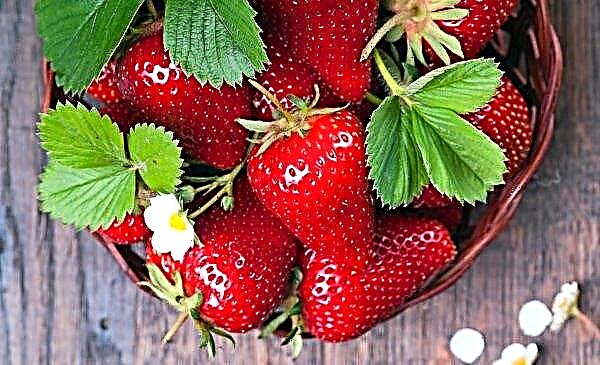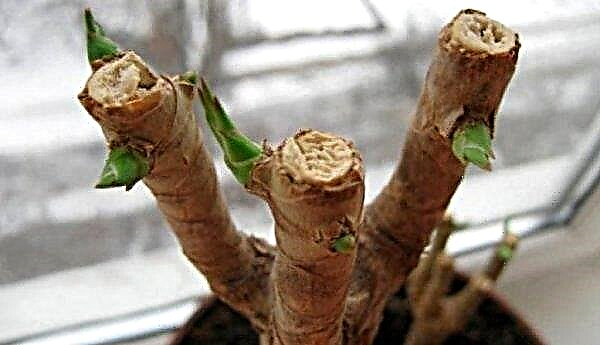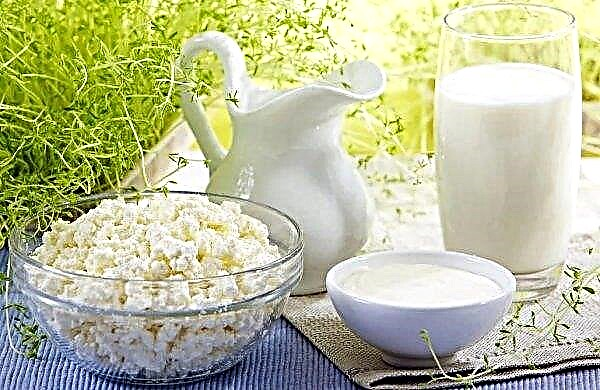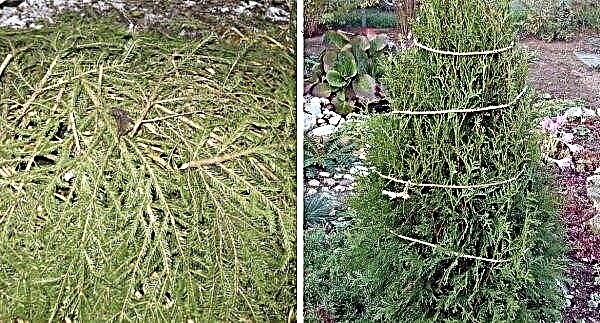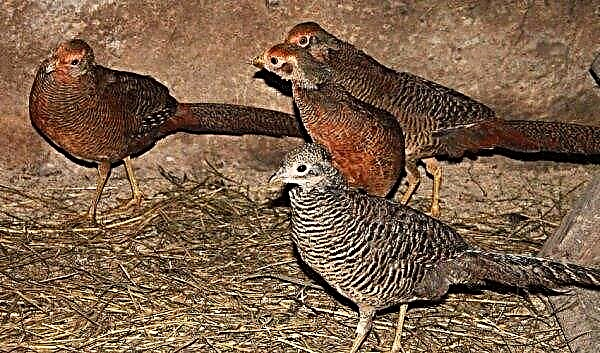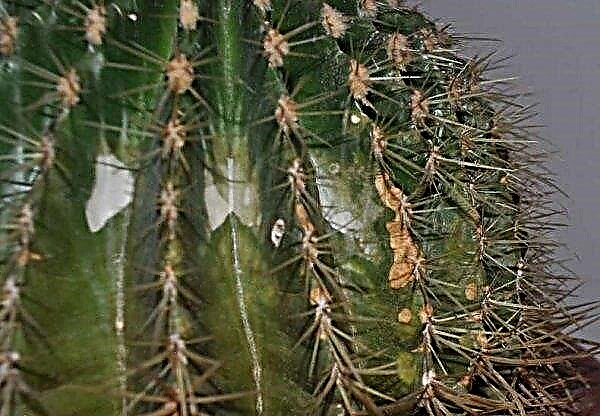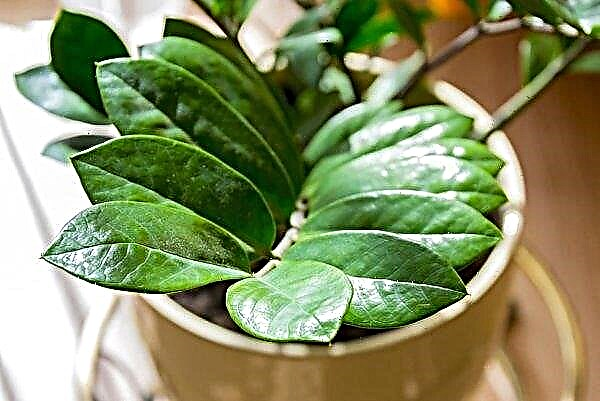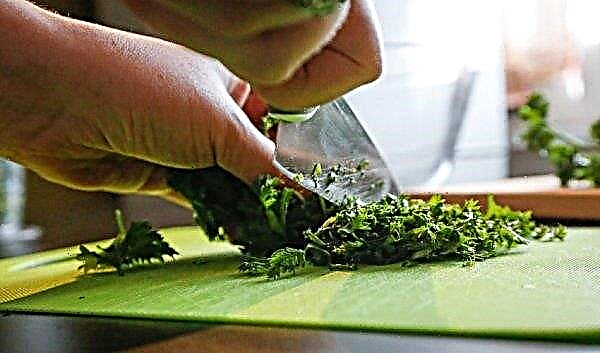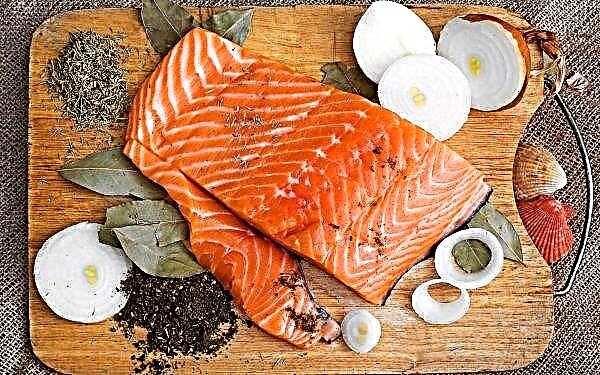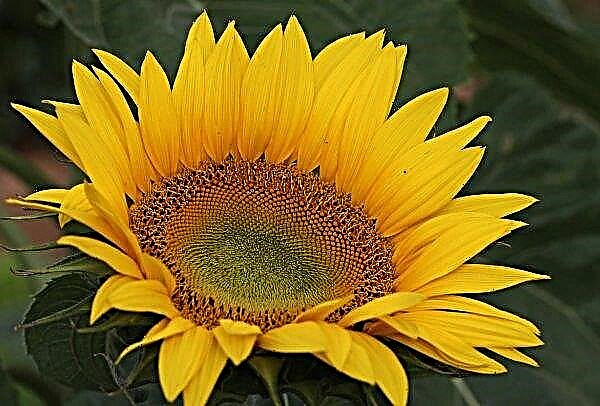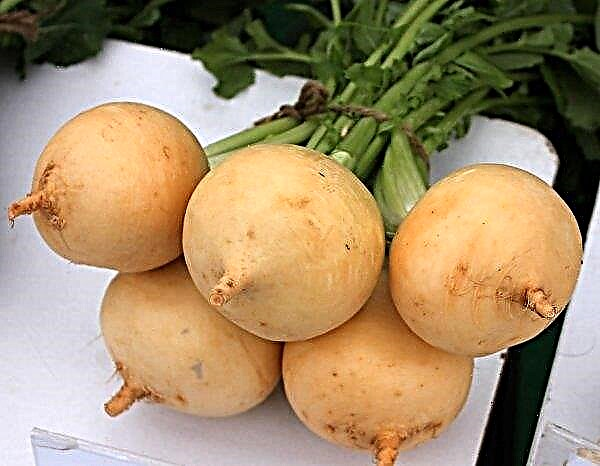The formation of a stem of pepper in the early stages of its growth requires constant individual observation. In order for the pepper to grow without defects, with large and bright fruits, the gardener will have to carefully adjust his sprouts. This process is called pinching.
What is pinching
Pasynkovka is one of the types of agricultural technology, which is carried out in the form of removing lateral shoots from a young plant stem. Pasynkovka is carried out in order to get rid of excess greens, which will not play a key role in the formation of the sprout, but will pick up the nutrients necessary for the fruits, moisture and vitamins. Excess greens can be barren stems, side shoots, leaves. Removal should be done in moderation, too abundant cutting can lead to stunting and death of the bush. The upper shoots must be left.

This procedure is carried out exclusively for young shoots, as cutting a large bush can be stressful for the plant. The bush should reach a height of at least 25 cm. First of all, stepsoning is done for tomatoes, but not many summer residents know that this procedure is also necessary for pepper. It will allow the plant to develop correctly, evenly distribute the receipt of light and moisture throughout the sprout, form large, juicy fruits without defects, and protect the plant from diseases and pests.
Did you know? Despite the fact that bell pepper is called “sweet”, it contains only 5% sugar, the remaining components are vitamins of groups B, C and P. Due to the high content of trace elements, this vegetable has a positive effect on the condition of the skin and hair, the immune system and is even a medicine from stress.
Do I need to pinch pepper in a greenhouse
Many gardeners argue about the need for stepsoning when growing peppers in a greenhouse. However, this approach to the question is incorrect. The need for pinching does not depend on the cultivation method (greenhouse or open ground), first of all, the procedure depends on the variety.
Most often, pruning is carried out in tall varieties, for low-growing ones it may even be unnecessary. How to properly remove the sprouts, we will consider in detail below. There are also varieties that are not characterized by abundant formation of lateral segments, so before starting the procedure, you need to carefully read the description of the seeds to be planted.
Greenhouses come in different designs and types of coverings. The most popular types for growing peppers are greenhouses made of polycarbonate, agrofibre, polyethylene, glass.
Video: Pecking peppers in a greenhouse
However, despite varietal differences, the pinching of a vegetable when grown in a greenhouse has its own reasons:
- The method of growing in a greenhouse is characterized by high humidity, so pinching is necessary to prevent the development of rot.
- There may be a lack of light in the greenhouse. In order for the sprout to form up and not to cover the light of neighboring sprouts with excess leaves, timely pruning should be performed.
- Most often, greenhouses have limited space. Because of this, a too dense landing is possible. In such a situation, pinching is more than advisable.
- As a rule, the temperature regime inside the greenhouse is higher than when grown in open ground. Warm and humid environments are ideal conditions for the development of diseases and pests. Individual verification of each bush is mandatory. When revealing the first stages of infection of the plant, the painful areas must be pinched off. If the disease was discovered at the wrong time and has already affected most of the plant, it must be eliminated to avoid spreading to neighboring bushes.
Did you know? Sweet pepper is one of the oldest cultivated vegetables. It began to grow another 6 thousand years ago. Despite the name "Bulgarian", its homeland is Mexico and Guatemala.
The pros and cons of pinching
Experienced gardeners highlight the many benefits of pinching bell peppers, so this procedure is popular, especially with greenhouse cultivation. However, any negligence and deviation from the rules can harm the plant, bring unnecessary chores and reduce productivity.
- Among the indisputable advantages of pinching are the following:
- The culture grows faster, is distinguished by its strength and resistance to disease.
- The plant does not grow in breadth, but upward, which saves space in the greenhouse and correctly distributes useful elements.
- The vegetable is characterized by increased productivity, the fruits appear large and regular in shape.
- The fruits of a plant that has been planted are distinguished by the best palatability, high juice content (since vitamins and water are concentrated precisely on the fruit part of pepper).

- Negative consequences after stepsoning can be:
- Stop in development and death if the plant is not ripe and stepsoning was carried out at a too early stage of growth, since the bush did not have time to prepare for "living" conditions and was not matured.
- Increased susceptibility to disease and poor harvest in case of non-compliance with the rules of pruning and removing healthy stems important for fruiting.
- Withering of a plant during herding during illness or a period of weakness.
Step-son removal technology
The description of the technology should begin with the fact that the formation of the bush is done when it has reached at least 25-30 cm, as we mentioned above. Only clean tools are used for pinching so as not to introduce dirt or infection into open sections.
Also, before starting pruning, you should pay attention to planting bushes. We remind you that with a rare planting, stepsoning is also not necessary, it can only harm the well-being of the bush. If you have made a preparatory inspection and carefully studied the characteristics of the variety, then proceed to stepsonovka.Important! Before starting the procedure, you should carefully check the condition of each bush. If you find a weakened, dilapidated or diseased bush - stepsoning for it is not carried out.
The formation scheme of the bushes may look as follows:
- When the bush has reached the desired height and at least 10 stems have formed on it, remove the side shoots.
- We remove the first bud and cut off the lower leaves.
- We pinch the main stems, which will serve as the "skeleton" of the plant.
- Next, from the emerging shoots we leave the strongest and largest, we remove the weakest. Thus, we form a plant only from healthy stems and do pruning, directing the shape of the bush up.
- In the process of this growth stage, pinch weaker shoots and remove the lower leaves, which are formed below the line of the first stem.
- Periodically remove the sterile shoots.
- We necessarily tie the bush at each stage of growth.
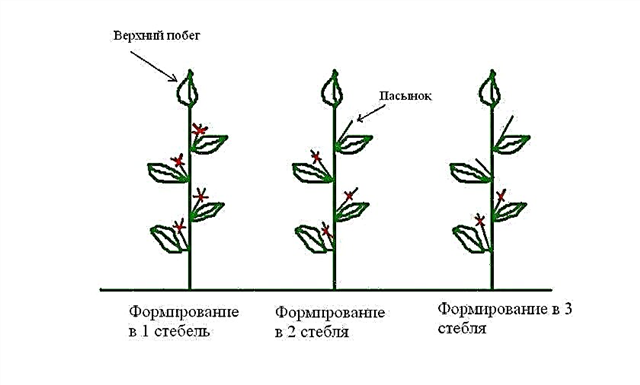
Features of pinching
Due to varietal characteristics, the process of pinching can differ in short and tall bushes. Since the formation of the stems is different, the geometry of the bush is different. Consider the nuances of pinching in detail for each type of variety.
Low grade
The goal of pinching low-growing varieties of bell pepper is to create a compact bush growing in breadth. To do this, the young shoots are removed from the upper plant and leave 5-7 of the strongest and most healthy. Excess leaves and sterile shoots that will thicken the bush will also need to be cut. This will improve ventilation and light access to all parts of the bush. In addition, stunted peppers need to be tied up.
It should be noted that pepper bushes are “neighboring” cultures, they do not like too large distances between shrubs, therefore it is recommended to plant them so that the leaves slightly touch neighboring plants. Seedlings of stunted peppers are planted at a distance of 15 cm from each other.
High grade
Tall varieties of peppers are formed with the aim of upward growth, so that the bush takes a V-shape, and skeleton stems are necessarily tied up at each growth stage.
Step-by-step technology for pinching high-grade pepper is as follows:
- On the central stem with 8–9 leaves, all extra shoots are removed to the fork (2-3 strong stems are left at the fork).
- First-order shoots that grow from the first bifurcation are thinned out, and only 2-3 skeletal stems are left of them (which are then tied up).
- These stems will eventually form second-order shoots, among which 2-3 pieces are also left and extra leaves are removed (1 leaf and 1 ovary on each of them are left).
- With third-order shoots, they do the same.
- Lower leaves that will grow to the first bifurcation are removed.
- Before the end of the growing season, bush growth is stopped so that the juices and trace elements are concentrated on the fruits. To do this, pinch the tops of the bushes.

Features of the care and formation of peppers in a greenhouse
Bulgarian pepper sprouts are planted in greenhouse soil after 50–70 days after the first seedlings. At the time of planting seeds, the soil of moderate acidity should be warmed up to + 15 ° C. Ground for pepper can have an admixture of wood, which will saturate the roots with oxygen.
From the first days, pepper needs top dressing, it is carried out in 4 stages:
- Seedlings of seedlings, on which 2-3 sheets have already formed, are treated with a solution of urea and superphosphate.
- Before planting seedlings in a greenhouse (for 10-12 days) should be fed with a solution of superphosphate and sodium sulfate.
- After planting peppers in greenhouse soil, it is recommended to feed the plant with vitamins. To do this, you can use any kind of mulch or mineral supplements in the preparations.
- The fourth stage provides for subsequent fertilizer with manure or mulch every 10 days (however, the frequency may vary depending on the state of the plant).
Also, pepper is necessarily abundantly watered after each fertilizer procedure. The general irrigation regime will depend on the condition of the soil. It should be noted that especially the bushes need moisture after herding, since the leaves, which serve as moisture condensate, are removed.Important! An equally important factor is watering. Pepper is a moisture-loving plant, so it is advisable to provide a mechanical irrigation system in the greenhouse. Especially effective will be drip irrigation, which will allow water to flow individually under each root.
In addition to top dressing and irrigation, greenhouse conditions should include air flow. To do this, the greenhouses are constantly ventilated (those structures that are only partially closed are an exception). The influx of air and light will protect the pepper from diseases, the spread of soft, white and gray rot, as well as other pests and diseases.
It is always nice to serve beautiful and juicy vegetables that speak of the hard work of your mistress. In order for the pepper to be large and productive, poured by the sun and health, experienced breeders recommend conducting a pinching procedure. However, before embarking on it, carefully read the varietal characteristics of vegetables.



